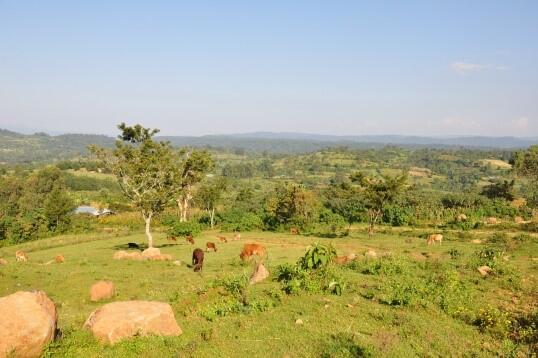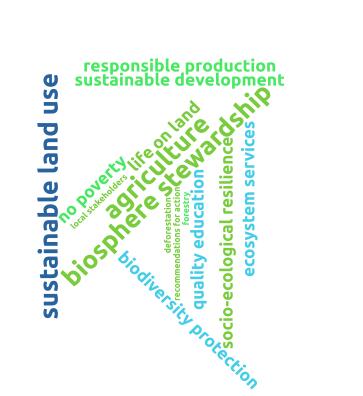Management of woody plants to improve multifunctionality in a cultural landscape of Ethiopia
International project funding
Subject and goals of the project
A central aspect of extensively used multifunctional agricultural landscapes in Ethiopia is that they have a variety of different woody plants. This diversity is currently threatened in Ethiopia by a policy of agricultural intensification in the sense of a "green industrial revolution". In the Agaro-Gera project area in southwestern Ethiopia, more than 100 tree species have been cultivated and used in the extensively used agricultural landscape. These woody plants had different functions in land use (e.g. for beekeeping, as medicinal plants, as firewood, for tools such as plows, as building material). Woody plants were habitats for many animal species such as birds, insects and reptiles. Currently, landscape change is occurring due to the cultivation of eucalyptus for timber. This causes a loss of structural and biological diversity in the landscape. There is a lack of knowledge and management approaches on the diversity of woody plants and their structural and systemic functionality (e.g. local climate, watersheds). This is where the planned project comes in, as the basics for management approaches will be collected, analyzed and prepared for science and practice. A guideline based on empirical data will provide assistance and knowledge. It will include a review and adaptation of international scientific findings on the promotion of socio-ecological resilience of landscapes, practical guidance on the promotion of multifunctional agricultural landscapes through the establishment/maintenance of woody vegetation, and recommendations for action for local land users to promote biodiversity-friendly land use practices with a focus on woody plants. In the final phase of the project, a pilot project will be implemented in a selected community, in which all the results of the project (including the guide) will be applied as examples.
Innovation and exemplary nature of the project
The project breaks new ground in addressing key issues of biodiversity conservation in cultural landscapes of southwestern Ethiopia. Based on the analysis of extensive land use forms, aspects of land use change, structural and systemic functions of woody plants for biodiversity and ecosystem services, recommendations for action and management approaches for valuable cultural landscapes will be developed. In this context, tools will be developed to support analyses and future decisions. In the form of a guideline, the recommendations for action will be introduced into the discourse with relevant actors and institutions on the management of multifunctional landscapes with special attention to the diversity of woody plants. The findings of the project will be presented to a broad expert public on the basis of the collected data. An attempt will be made to transfer the project results to other regions of Ethiopia and to other international contexts.
Special aspects of the project
The project addresses the Sustainable Development Goals (SDGs) "Zero Hunger", "No Poverty", "Responsible Consumption and Production", "Quality Education" and "Life on Land". The project links up with cooperations in the country and is implemented by local stakeholders. The project focuses in particular on biosphere stewardship.
Funding subject: Nature conservation and sustainable use of nature in cultural landscapes and protected areas
Cooperation partners:
- University of Lüneburg, Institute of Ecology, Germany
- Communities and stakeholders in the Agaro-Gera project area in southwestern Ethiopia
Locations:
- Germany (focus: Lüneburg in Lower Saxony)
- Ethiopia
Funding period: April 2020 to April 2022
Project costs: Total volume: 124 896 Euro, DBU funding: 124 896 Euro
DBU-AZ: 35333
Note: Translation of the German version with DeepL
Last updated: 16.11.2021




